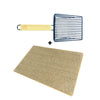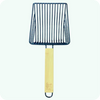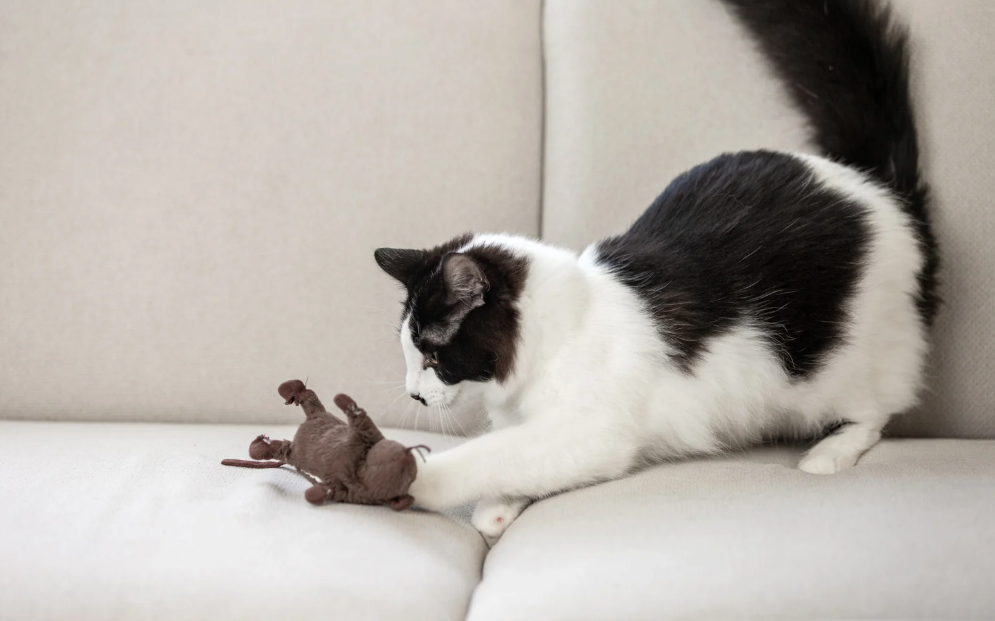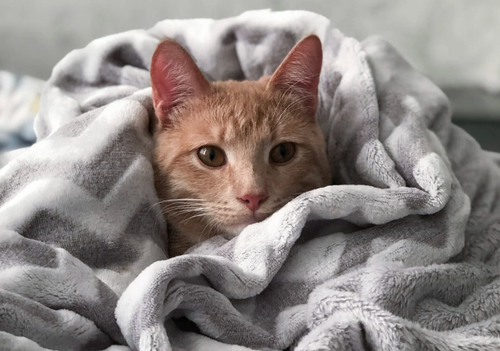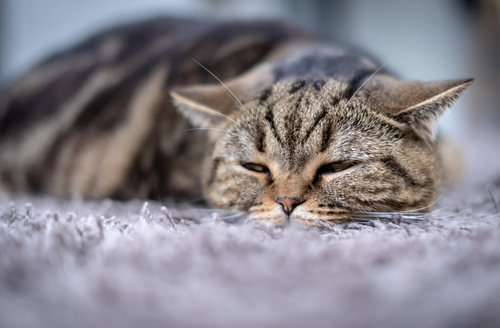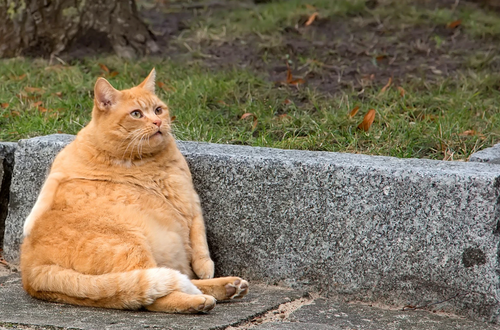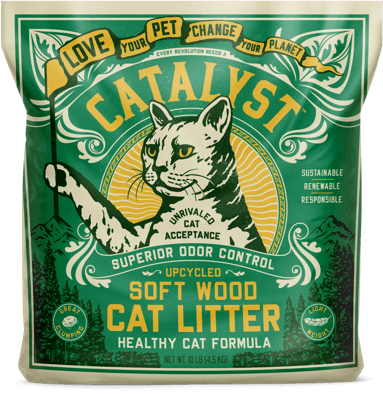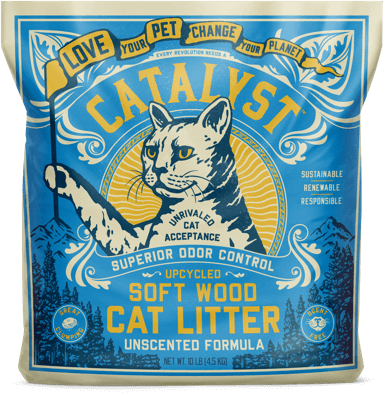If you’ve ever had kids home on summer break—or just found yourself stuck inside with a restless roommate or family member—you know the importance of keeping everyone entertained with enriching activities.
But don’t forget about your feline family member! Cats need stimulation too, and a little enrichment can go a long way.
Looking for ideas? Read on—and if you do have kids at home, get them involved! Two birds, one stone (not literally, of course).
Toys
You likely already know this, but most cats love toys! Try to have a few options and rotate them frequently so your cat stays interested.
Interactive toys require your cat to actively participate—and they’re great for bonding, exercise, and releasing pent-up energy. Think laser pointers, feather wands, ribbon dancers, treat dispensers or toys that mimic prey, like battery-powered mice. These toys engage your cat’s natural instincts to chase, pounce, and stalk—making playtime both fun and physically stimulating.
Foraging toys tap into your cat’s natural hunting and scavenging behaviors, while providing mental enrichment. These include puzzle feeders, treat-dispensing balls, snuffle mats, and toys that hide kibble or treats inside. Foraging toys slow down mealtime, reduce boredom, and keep your cat mentally engaged. These are especially helpful for indoor cats who need an outlet for curiosity.
Solo-play toys are ideal for when your cat is home alone or just feeling independent. These toys can be batted, chased, or carried around without your involvement. Think crinkle balls, soft mice, kicker toys (like stuffed tubes with catnip), spring toys or small plush animals. They offer physical activity and mental stimulation, helping prevent boredom or destructive behavior.
Sensory or catnip toys appeal to your cat’s senses—especially smell, sound and texture. These include toys filled with catnip or silvervine, crinkle toys, toys with bells or anything with feathers or faux fur. Many cats love to roll on, bite or cuddle these toys, which can provide both excitement and calming effects.
Mental stimulation
We touched on this above with the puzzle feeding toys, but there are other ways to get the wheels turning in your cat’s intelligent brain.
Training: Dogs aren’t the only pets who can be trained performers. Teach your cat simple tricks like how to sit, shake, jump through hoops and fetch.
Hide-and-seek: Offer your cat a year-round Easter egg hunt by hiding treats and toys throughout your home for them to find.
Sensory enrichment
We touched on this briefly with the sensory or catnip toys section above, but those toys aren’t the only way to appeal to your cat’s senses.
Scratching posts will help keep your cat’s claws healthy and give them an outlet to release stress. Plus, it will help fulfill a cat’s natural instinct to scratch. Include different surfaces, textures and locations, and make sure you offer horizontal and vertical scratching posts.
Catnip is entertaining for you and your cat! Catnip is a natural herb that includes a chemical compound that triggers a variety of responses, including relaxation, and playfulness. It stimulates areas of the brain that act as “happiness” receptors. Cats can get this response from sniffing or ingesting catnip. And fear not, catnip is perfectly safe for them.
Other scented items can also stimulate your cat’s senses. Vanilla, mint and lavender are favorites, along with the smells of non-toxic flowers.
Climbing and exploration
You already know your cat loves to explore and find high perches to observe its surroundings. Ensure you have plenty of vertical space where they can indulge this desire. Below are a few extra things to consider to stimulate your cat’s need for adventure.
Cat trees and shelves are excellent ways to offer exploration and observation in your home.
Window perches are also feline favorites, particularly ones that offer a view of the outdoors. Pro tip: Add a birdfeeder or two in your yard. Your kitty will be entertained for hours watching.
Catios: If you have the room and sense your cat wants even more outdoor adventure, create a catio or an enclosed outdoor playspace so your kitty can safely explore the great outdoors. Of course, take the proper precautions to protect against predators, and protect potential prey from your cat.
If time or budget do not allow a catio, that’s fine! Cardboard boxes, tubes or tunnels are perfect play spaces for your cat. They encourage hiding, too, and can give your kitty a sense of security.
Socialization
While your cat may have you believe he or she is far too civilized to need company, don’t be fooled. Interaction is key for your cat’s socialization. Play with your cat, particularly in an interactive manner. Use toys like the aforementioned laser pointer, feather wand or other toys that are more fun with your involvement. You can also consider getting your cat a playmate. A second cat could offer companionship and improve loneliness if you’re concerned about leaving your cat alone for long periods of time. But you know your cat best, and some felines just want to be the only king (or queen) of your home.
Incorporate some or all of these suggestions and notice how your cat responds. We know they’ll be thrilled to have even more of your attention, and probably some extra toys as well!
